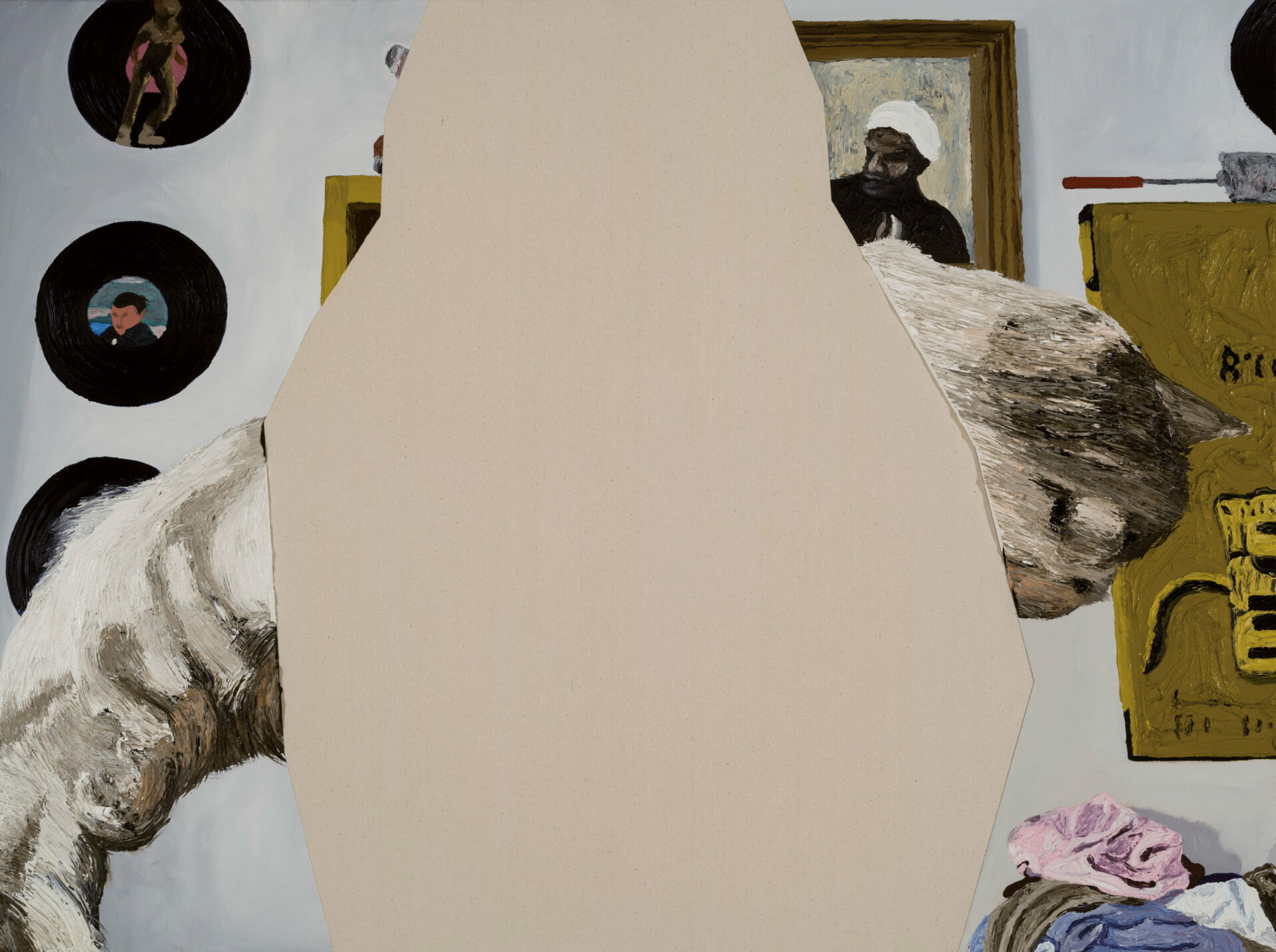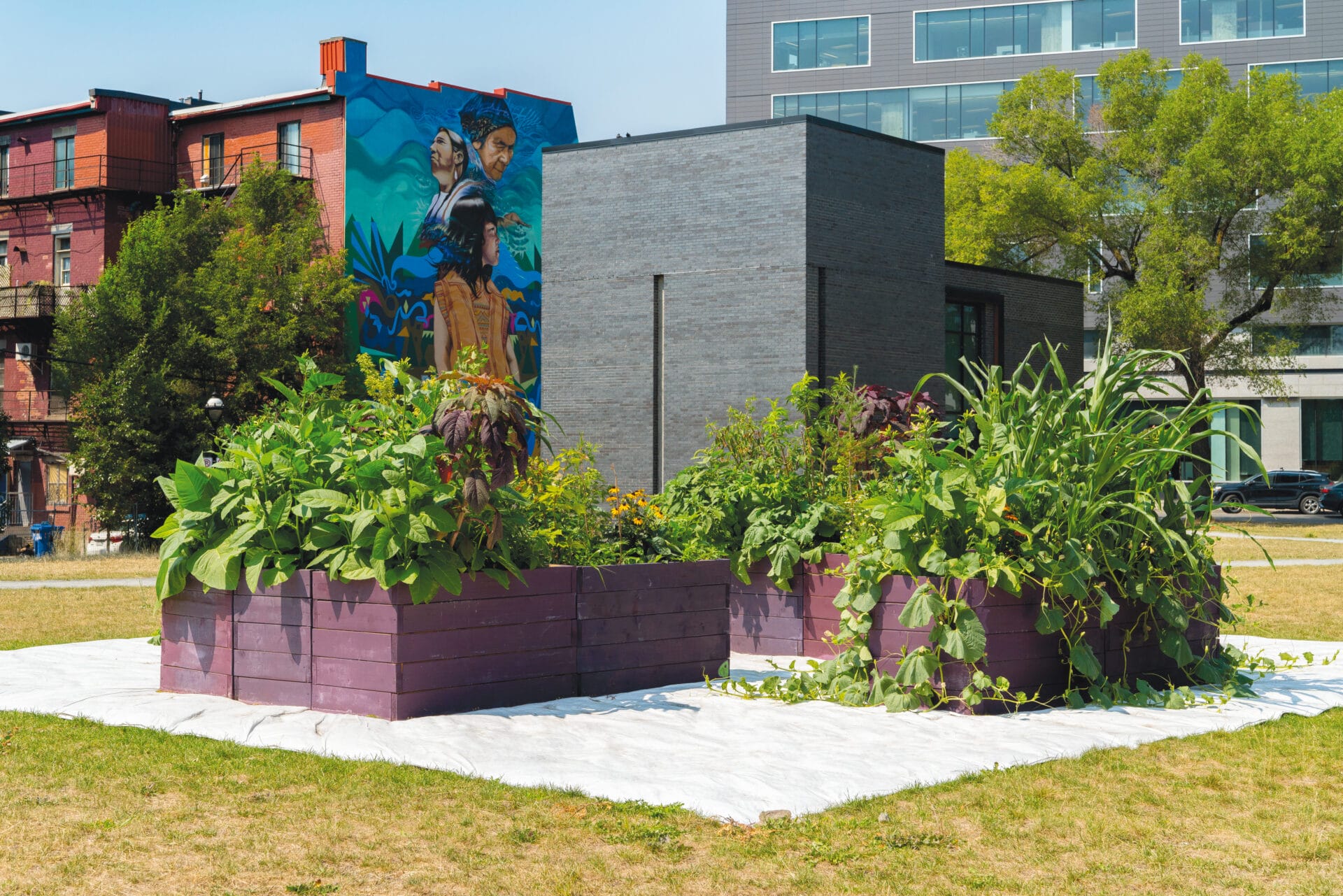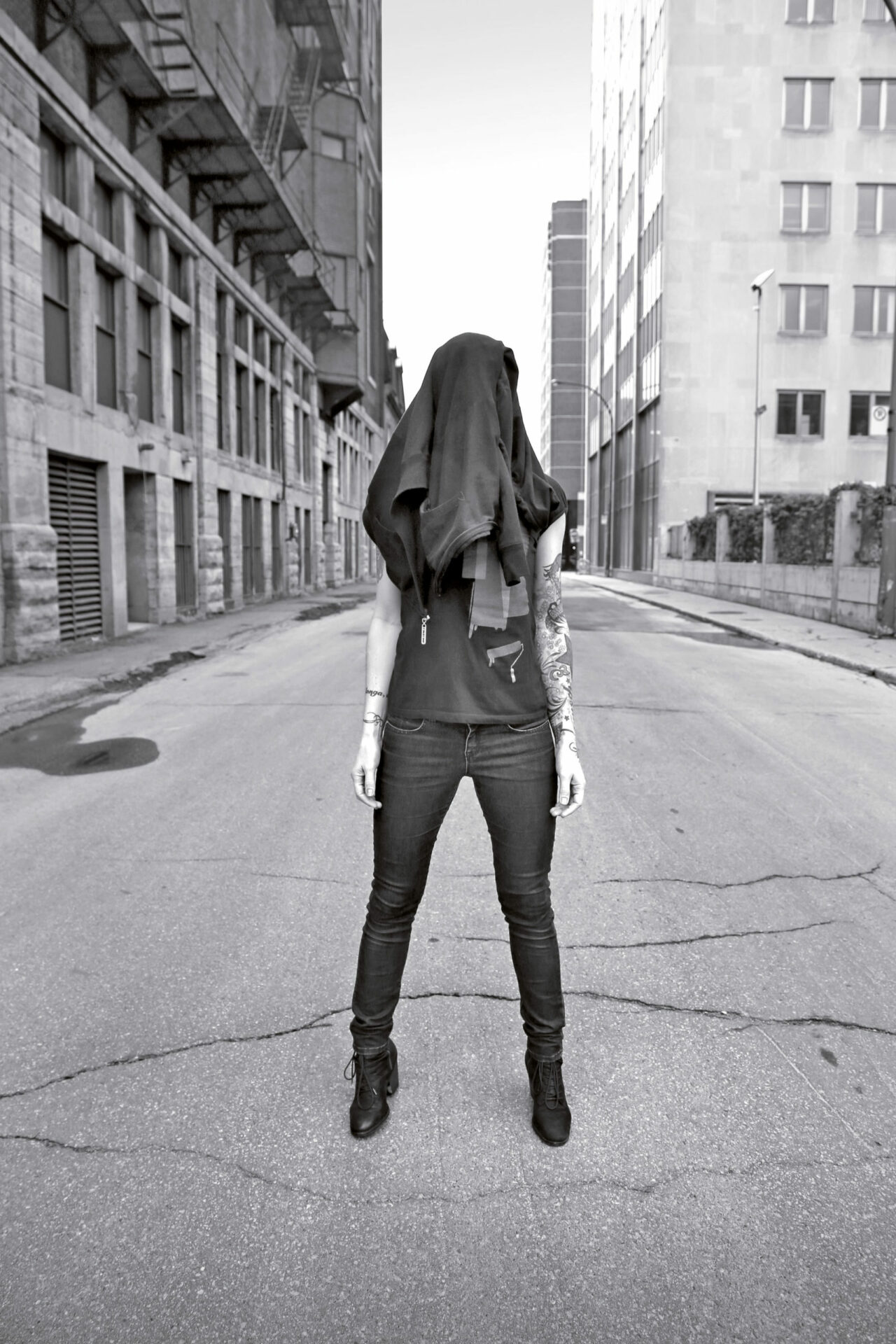
Photo : Guy L’Heureux permission de l’artiste | courtesy of the artist
Painting Deployed
While the codes of painting, whether figurative or non-representational, have been amply revisited in the last forty years or so, no less productive and fecund research is taking place on how exactly paint is applied. It is as if interest in materiality and application were to directly interrogate the fabrication of the painting and turn the very application of the material into a locus of thought. That, at least, is what I observe among some emerging painters who have attracted particular attention in the last five years and who, in their methodologies, have shown a desire to take a closer look. In their inventiveness, they forgo the painter’s conventional artillery (brushes, spatulas) in order to get closer still to the material, to gain better control over it in some circumstances.
This approach is apparent in the work of Julie Trudel, who pursues an explorative exercise in colour, both optical and material, in which the chromatic is less a concern than coloured matter that comes together in structural motifs, whose shine or matte effects, transparency or opacity, summon the gaze in various ways. A condition that derives from the kinds of drippings and supports chosen by the artist, whose cutaways and angles shape the painting.

Photo : Richard-Max Tremblay
permission de | courtesy of the artist & Galerie Hugues Charbonneau, Montréal

Croisements T123F123M, 2013.
Photos : Martin Désilets
permission de | courtesy of the artist & Galerie Hugues Charbonneau, Montréal

For Jérôme Bouchard, the slow removal of micro-stencils with a knife expresses an entirely different proximity to the material. Here the image is created by a multi-layered and intermingled network of lines and white gradients. The composition, akin to “all-over” and resulting from the application of several layers, is an end in itself and appears for what it is — to wit, a series of decisions made in the development of the micro-stencils and in the choice of tonalities of a nearly colourless, chalky-looking, all-but-imperceptible material.

Photo : Guy L’Heureux
permission de | courtesy of the artist & Galeries Roger Bellemare et Christian Lambert, Montréal

Répartition 99, 2013.
Photos : Guy L’Heureux
permission de | courtesy of the artist & Galeries Roger Bellemare et Christian Lambert, Montréal

While contour lines may draw forms in desaturated hues, it is the very contours of distinct brushstrokes and, more recently, of pieces of canvas that build up Sarah Cale’s surfaces. The artist uses collage and carries into her work a material made tenuous in its transfer from one surface to another. For Cale, the materiality of painting becomes a compositional element that manages to fuse drawing and colour, as her work is constructed as much by line as by colourful strokes. She brings the direct application of paint into her latest work and blends the various elements in the development of her paintings in novel ways; combining textures, fabric cut-outs, and geometric forms, her approach in these formal constructions emphasizes the literality of the “handmade.”

Photo : permission de | courtesy of the artist & Jessica Bradley Gallery, Toronto

Pierced, 2013.
Photos : permission de | courtesy of the artist & Jessica Bradley Gallery, Toronto

A similar concern is evinced in the paintings of Julia Dault, who applies and subtracts materials using unconventional tools (rubber combs, cotton-tipped sticks, door handles, found objects) and procedures for removal whose effects are to restrict her movement. Despite the distance that they create from the surface, these instruments are wielded by hand, the hesitations and awkwardness of the handling leaving their mark on the canvas. Dault is a strong advocate for transparency in artwork, which, she says, must exhibit the means of its construction. She never mixes her colours, choosing instead to use them as they are on an array of varying supports — canvas, silk, linen, polyester, vinyl, synthetic leather, nylon — and deals directly with the reactions that the materials arouse. Thus, the whole idea of a response to the materials — that is, the “making” and the shaping — is brought to the fore.

Photo : permission de | courtesy of the artist, Marianne Boesky Gallery, New York
& Jessica Bradley Gallery, Toronto



Downtown Mystic, 2013 (sens horaire | clockwise).
Photos : Daniele Kaehr
permission de | courtesy of the artist, Marianne Boesky Gallery, New York
& Jessica Bradley Gallery, Toronto
As if in response to these traces and inscribed choices, the voids in the works of Pascal Caputo are just as revealing of the artist’s presence and of what lies beneath the material. Indeed, the meaning that wells up from the emptiness created in these compositions is less a rejection than an elimination of the subject that brings the formal plasticity of the painting to our attention. The non-painted and the non-material become painted, to some extent; they become a form and a material that we cannot call painting but that we must take into consideration in apprehending the composition. As if what was painted became pretext for the non-painted and, in the end, gave way to it entirely, effectively diverting the “making” by choosing to function — and to engage our imaginations — through cut-outs and subtraction. In these five cases, the painting as object and as locus of the act of painting is relived in the creative process; as such, it belongs to an aesthetics of gesture, in which resides a prime motif.

99177_1010486073246_1557832302_786633_2736_n_jpg, 2012.
Photos : Guy L’Heureux
permission de l’artiste | courtesy of the artist

[Translated from the French by Ron Ross]




